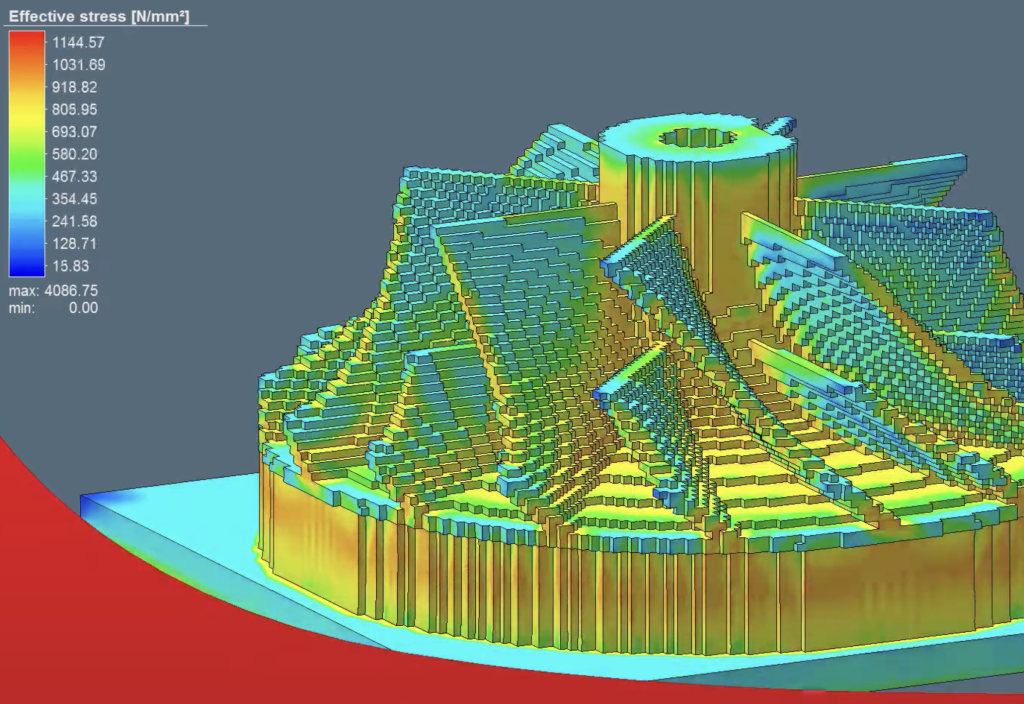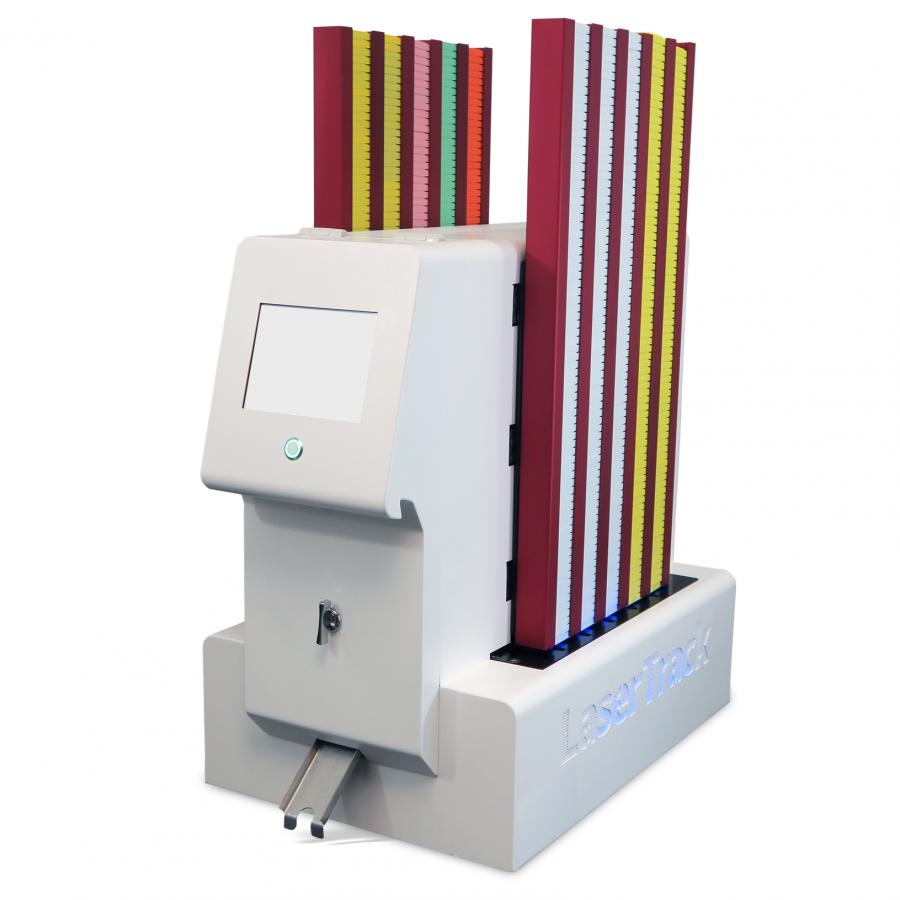3D Printing Market Is Expected To Reach USD 34.8 Billion by
Farmington, March 15, 2023 (GLOBE NEWSWIRE) — The Global 3D Printing Market The Size Market Was Valued at USD 16.75 Billion in 2022, and Is Expected to Reach at 34.8 Billions By 2030. It is expected to grow at a CAGR Of 23.3% during the Forecast Period 2023-2030. 3D printing allows you to create internal structures such as honeycomb patterns that provide support and strength without the need for additional material. 3D printing can make things lighter and stronger than traditional methods. 3D printing could change the way we see making things and getting them out to people. 3D printing allows products to be produced on-demand without the need for huge warehouses or large factories.
Request Sample Copy of Report “3D Printing Market Size, Share & Trends Estimation Report By Component Outlook (Hardware, Software, Services) By Printer Type Outlook Desktop 3D Printer, Industrial 3D Printer) By Technology Outlook (Stereolithography, Fuse Deposition Modeling, Selective Laser Sintering, Direct Metal Laser Sintering, Polyjet Printing, Inkjet Printing, Electron Beam Melting) By Region, And Segment Forecasts, 2022 – 2030”, published by Contrive Datum Insights.
Segment Overview:
Insights on Printer Types
3D printers can be found in the Printers category. They use digital models to produce real objects. 3D printers are rapidly growing in popularity. There are many models that can be used to meet the needs and requirements of various industries. Materials include metals, plastics, and ceramics. They are all used in 3D printing. There is a growing market for 3D printed materials. New materials are being developed to make it possible to create more 3D printed products.
Services: This segment includes third-party companies offering 3D printing services. These services include design and modeling, as well as 3D printing and post processing. The market for 3D printing services will grow as more businesses seek outside help to meet their 3D printing requirements.
The software section includes programs that allow you to create and print digital models. The market for 3D printer software is expanding. There are new software tools that make it easier to create 3D printed models.
3D scanners can be found in the Scanners Section. These are used for turning real-world objects and creating digital models. 3D scanners are becoming more popular as businesses seek to digitize physical inventories and create custom designs using physical objects.
The 3D printing market is expected to continue growing as the technology becomes more affordable and easier to use. The growth rates of various segments might be different depending on the industry and application.
Distribution Channel Insights:
The software that is used to create 3D model can be found under the section Computer-Aided Design. 3D printing is possible with CAD software. Designers can create complex, precise 3D models. This software is used to control the 3D printing machine. You can adjust the speed, temperature, and layer height of your 3D printer with this software. Additionally, you can monitor how the job progresses. You can simulate the 3D printing process with the simulation software segment. Simulator software can be used to predict the behavior of a 3D model during printing as well as identify and fix any issues before it is printed. Software: This part contains software that can be used to inspect 3D-printed parts. To check the quality of a part, and to find flaws that need attention, users can use inspection software.
The market for 3D printing software should continue growing as more industries use it. Different software types will grow at different rates depending upon the specific industry and the application.
Regional Outlook
The strong presence of key players in the market, increased demand by end-use industries, as well as more people using advanced technology, will all contribute to North American’s 3D printing market growth. The European 3D printing market will grow rapidly. This is due to the increasing use of 3D printing in aerospace and automotive, as well as newer 3D printing technologies. The fastest growing market for 3D printing in Asia-Pacific is predicted to be Asia-Pacific. This is because 3D printing has become more common in aerospace and automotive industries. Healthcare and consumer goods industries are also growing.
The Middle East, Africa and Asia are expected to see moderate growth in 3D printing. This is due to the increasing use of 3D printing within the healthcare and aerospace industries as well as the expansion of the consumer goods industry.
Globally, the 3D printing industry is expected to continue growing in all regions. But each region will have its own growth rates and needs. How far technology has advanced, the state of the economy, and the government’s efforts to support the 3D printing industry will all impact the growth rates in each region.
Get this premium research report@
https://www.contrivedatuminsights.com/buy/248580
Scope of the Report:
| Report Attributes | More Details |
| Growth Rate | CAGR of 23.3% Between 2023 and 2030 |
| Revenue Forecast for 2030 | USD 34.8 Billion |
| By Solution | Customer Service, Customer experience Management, CRM Analytics Marketing Automation, Salesforce Automation Social Media Monitoring, and Other |
| By Deployment | Cloud, on-premises, or other |
| By Enterprise Size | Large Enterprises, Small & Medium Enterprise, Other |
| End-use | BFSI, Retail, Healthcare, IT & Telecom, Discrete Manufacturing, Government & Education, Other |
| By Companies | Stratasys, Ltd., Materialise, EnvisionTec, Inc., 3D Systems, Inc., GE Additive, Autodesk Inc., Made In Space, Canon Inc., Voxeljet AG Temperature Concepts, Sotera Wireless, Qardio |
| Regions and Countries Covered |
|
| Base Year | 2022 |
| Historical Year | 2017-2022 |
| Forecast Year | 2023 – 2030 |
Market Dynamics
Drivers:
3D printing technology is changing: 3D printing technology continues to improve and becomes cheaper, quicker, and more user-friendly. This has made 3D printing technology more accessible to businesses and people, allowing them to add the technology to their everyday tasks.
People are more interested in custom-made products. 3D printing is able to produce small batches of highly customized products in a way that is impossible with traditional manufacturing processes. This is especially useful in industries like aerospace, healthcare, and auto, which require customization.
Cost savings: 3D printing often costs less than traditional methods of manufacturing things, especially if only a few items are required. You can save both time and money by not having to purchase expensive tools and molds.
Sustainability: 3D printing has the potential to be more environmentally friendly than traditional manufacturing methods. It uses less waste materials and can make use of materials that are already in use.
3D printing has become more common in many industries including healthcare, aerospace, automotive, consumer goods, and other areas. People are increasingly interested in 3D printing services, and purchasing 3D printing tools.
Increased funding and government support: Many governments invest in research and development for 3D printers, which drives innovation and spreads the technology.
Restraining Factors
3D printing has many options, but they are still limited to a few materials. It can be difficult to print certain types of items with 3D printing.
Inadequacy of standardisation: 3D printing has yet to be established. This makes it difficult for businesses and organizations to make use of the technology and guarantee the same quality on all printers.
Intellectual property concerns: 3D printing makes products easier to copy and replicate, which could raise concerns about intellectual property infringement.
Slow production speeds: 3D printing can slow down, especially when producing complex products. This can reduce the number of products that can be produced in a given time.
High costs: While 3D printing is less expensive than traditional methods of producing small quantities, it can still be costly for larger production runs.
Problems with regulatory approval: 3D printing poses regulatory challenges, particularly in the healthcare sector, where 3D-printed medical devices or implants require extensive testing and approval.
These are the Key Segments:
Top Market Players
Stratasys, Ltd., Materialise, EnvisionTec, Inc., GE Additive, Autodesk Inc., Made In Space, Canon Inc., Voxeljet Ag, and other.
Solution
- Customer Service
- Customer Experience Management
- CRM Analytics
- Marketing Automation
- Salesforce Automation
- Social Media Monitoring
- Other
By Deployment
By Enterprise Size
- Large Enterprises
- Small & Medium Enterprise
- Other
By End-use
- BFSI
- Retail
- Healthcare
- IT & Telecom
- Discrete Manufacturing
- Government & Education
- Other
Regions and Countries Covered
- North America (US, Canada Mexico, Rest of North America).
- Europe: (Germany. France. Italy. Spain. UK. Nordic Countries. Benelux Union. Rest of Europe.
- Asia-Pacific: (Japan. China, India. Australia, South Korea. Rest of Asia-Pacific).
- The Middle East & Africa: (Saudi Arabia, UAE, Egypt, South Africa, Rest of the Middle East & Africa)
- Latin America (Brazil. Argentina. Rest of Latin America)
- Rest of the World
Contrive Datum insights also published other related studies
- Medical Supply Delivery Service Market – The global Medical Supply Delivery Service Market size was USD 50.33 Billion in 2022 and is expected to reach USD 97.5 Billion by 2030, with a CAGR of 7.6% from 2022 to 2030.
- Medical Devices Market – The Global Medical Devices Market Size Was Valued At USD 488.98 Billion In 2021. This Market is projected to grow from USD 495.46 Billon in 2022, to USD 718.92 Billon by 2030. The forecast period shows a 5.5% CAGR.
- Contact Lenses Market – The Global Contact Lenses Market Size Was Valued At USD 9.48 Billion In 2021. According to the Market Forecast, it is projected that the market will grow from USD 9.94 Billon in 2022 and USD 14.80 Billon by 2030. This represents a 5.9% CAGR.
You can customize the report: You can customize the report to suit your needs. [email protected] Oder +1 215-297-4078. Our sales representatives will be glad to discuss your requirements and provide the best reports.
About us:
Contrive Datum Informationsights (CDI), a global delivery partner, provides market intelligence and consulting services for officials in various sectors, including investment, information technology, telecommunications, consumer technology, manufacturing markets, and other areas. CDI helps business executives, investment communities, and IT professionals make informed decisions about technology purchases. They also help to implement strong growth strategies that will sustain market competition. Contrive Datum Informations is a group of over 100 analysts with a combined market experience of more 200 years. They guarantee the delivery of industry knowledge and expertise at both the national and global levels.
Social Media: LinkedIn / Facebook
Get in touch with us
Anna B. | Head Of Sales
Contrive Datum Insights
Phone: +91 9834816757 | +1 2152974078
Email: [email protected]
Website:
https://www.contrivedatuminsights.com
Press releases from Contrive Datum insights
Recent Contrive Datum Insights – Latest Reports








